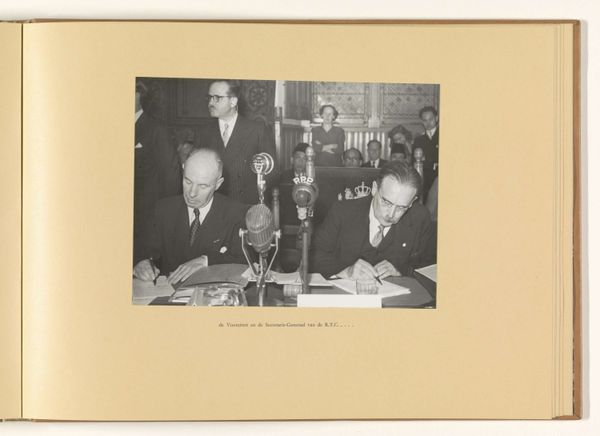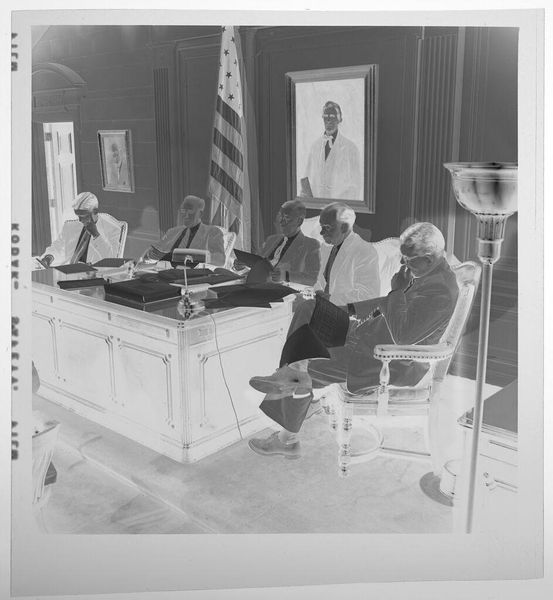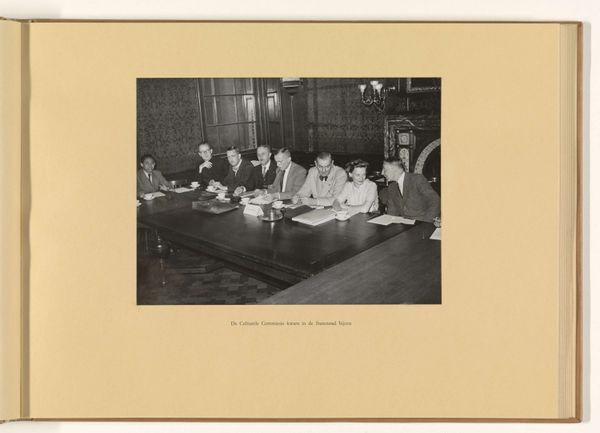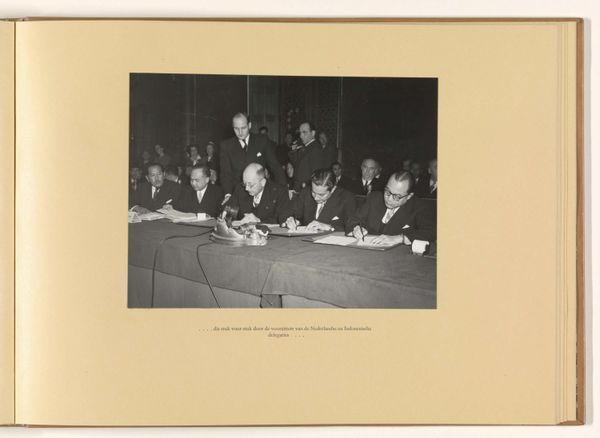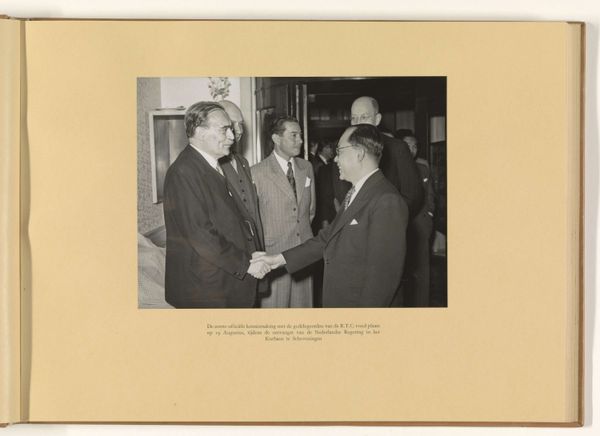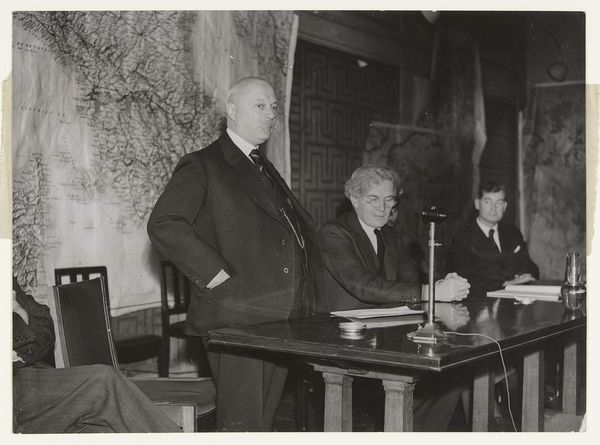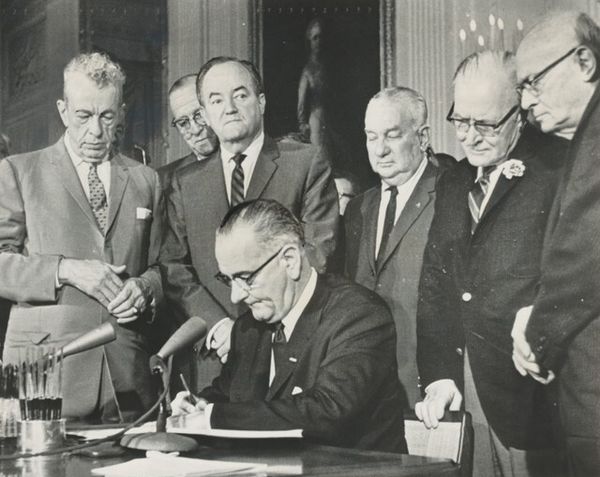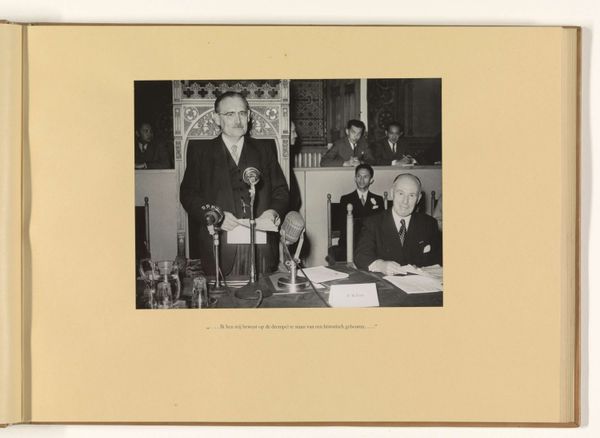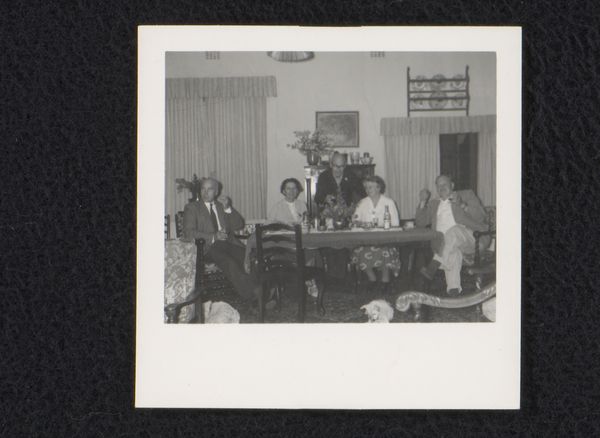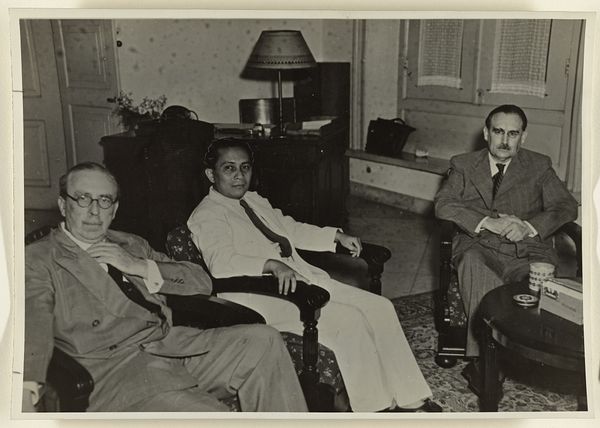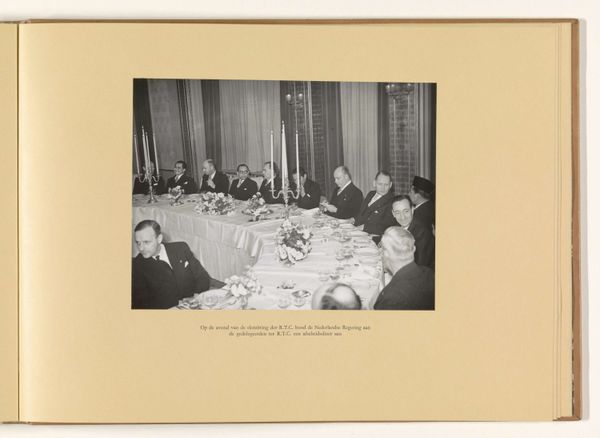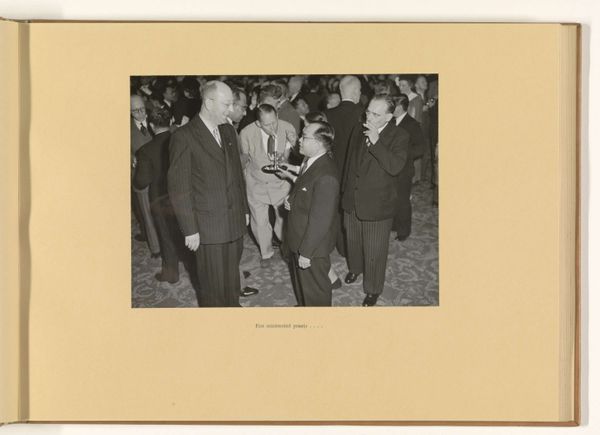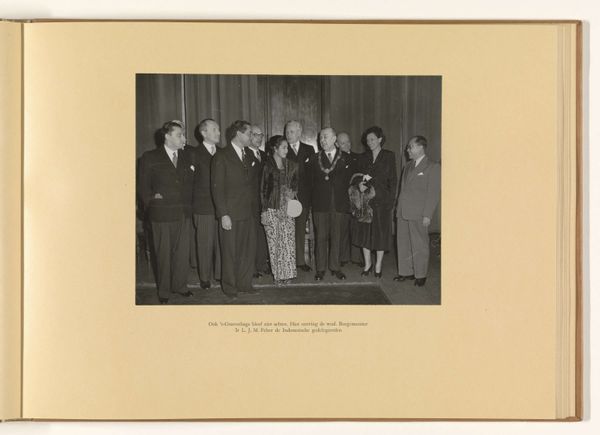
photography, gelatin-silver-print
#
print photography
#
archive photography
#
photography
#
historical photography
#
gelatin-silver-print
#
history-painting
Dimensions: height 11.5 cm, width 18.5 cm
Copyright: Rijks Museum: Open Domain
Editor: Here we have a gelatin silver print, a photograph entitled "Japanse oorlogsmisdadiger Sonei," or "Japanese war criminal Sonei," dating probably from between 1946 and 1948. It's stark. I'm immediately struck by the contrast between the accused, head bowed, and the observing officers. What’s your interpretation of this work? Curator: This photograph captures a moment laden with socio-political weight. Think about what’s *not* shown: the atrocities that led to this trial. The image offers us a carefully staged view of justice, shaped by the victors. The gaze of the Western officers versus the bowed head is a potent, calculated opposition. Where do you think power resides within the frame? Editor: Definitely with the officers. Their direct gazes feel like judgment itself. It’s almost like they’re posing for the camera, or perhaps a bigger audience. I'm now realizing this image is a visual construction rather than a candid moment. Curator: Exactly! It’s meant to be consumed, and understood in a very specific way by the public. Consider the role of photography during and after the war. It’s a document, but also powerful propaganda, contributing to a certain narrative about good versus evil. The photographic technology itself is almost weaponized, don’t you think? Editor: That's chilling. So the archive functions, at least partially, as a justification? Almost an assertion of a particular cultural and political point of view on justice and power. It's incredibly powerful how a seemingly simple photograph can hold so much historical complexity. Curator: Precisely. It encourages a reflection of how such historical records can impact social understanding. Editor: Thinking about it this way has completely changed how I perceive archival photography! I initially saw it as a straightforward record but now I recognize the layers of socio-political influence embedded within. Curator: That awareness is crucial in understanding how history and power intertwine in art and visual culture.
Comments
No comments
Be the first to comment and join the conversation on the ultimate creative platform.
